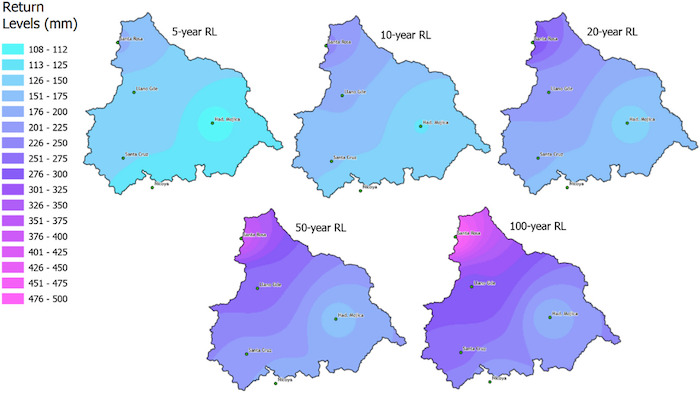
HUGUENIN, SERAFIN, WAYLEN – A spatio-temporal analysis of the role of climatic drivers influencing extreme precipitation events in a Costa Rican basin
Caroline Huguenin, Katherine Serafin, Peter Waylen
Article first published online: 21 August 2023
DOI: https://doi.org/10.1016/j.wace.2023.100602
ABSTRACT: Regional patterns of rainfall are changing around the world, putting pressure on social, economic, and environmental systems, and changing the outlook for food, water, and health security. This is the case in the Tempisque-Bebedero River Basin (TBRB), located on the Pacific slope of northwest Costa Rica, which relies heavily on water resources for tourism, agriculture, ranching, and fish farming. In this study, we use non-stationary extreme value analysis to characterize the climatic drivers of extreme precipitation in the TBRB. Daily extreme precipitation events at stations across the TBRB are selected using a peak-above-threshold approach, and interannual climate variability is included as time-varying covariates in a non-stationary point process model, using three regional climate indices: the Caribbean Low-Level Jet (CLLJ) index, the Oceanic Niño Index (ONI), representative of the El Niño Southern Oscillation (ENSO), and the Atlantic Multidecadal Oscillation (AMO) index. We find that the magnitude and frequency of precipitation extremes in the basin are driven by the CLLJ and the AMO. The ONI is only a significant driver of extreme precipitation in the northwestern region of the basin. This is likely because ENSO controls the strength of the CLLJ, thus the dominant impact of ENSO on precipitation in the TBRB may be incorporated within the CLLJ component of our model.
Read the full publication in Weather and Climate Extremes.